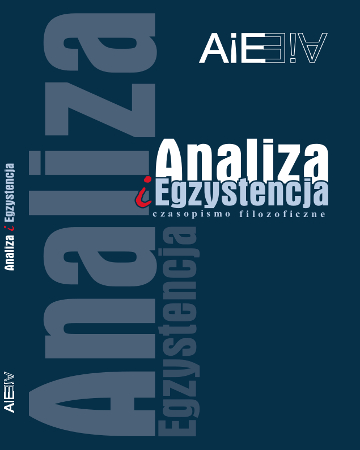
ISSN: 1734-9923
eISSN: 2300-7621
OAI
DOI: 10.18276/aie.2021.53-04





Issue archive /
53 (2021)
Koncepcja pośmiertnej szkody – czy jest warta utrzymania?
(Conception of Posthumous Harm – Is It Worth of Sustain?)
| Authors: |
Olga
Dryla

Uniwersytet Jagielloński |
| Keywords: | posthumous harm harm of death person postmortem person antemortem duties to the deceased duties to the dead |
| Data publikacji całości: | 2021-03 |
| Page range: | 19 (69-87) |
Abstract
The question of an origins and a range of ours duties to the deceased is a crucial
issue conditioning the possibility of practical decisions according to such different
branches of science as archeology (the rules of exploring and exhibiting of human
remains) and biomedicine (the rules of using human remains for research and
educational purposes). The text is devoted to conception of posthumous harms
by J. Feinberg along with its non-intuitive consequences, putting forward counter
arguments, as well as alternative ideas.
Download file
Article file
Bibliography
| 1. | Andrews, L.B. (1998). Do the Dead Have Interests? Policy Issues for Research After Life (with D. Nelkin). American Journal of Law & Medicine, 24 (2&3), 261-291. |
| 2. | Broad, C.D. (1971). Egoism as a theory of human motives. W: C. D. Broad (red.), Broad’s Critical Essays in Moral Philosophy (s. 247-261). London: George Allen & Unwin. |
| 3. | Buchanan, A. (1988). Advance Directives and the Personal Identity Problem. Philosophy and Public Affairs, 17 (4), 277-302. |
| 4. | Callahan, J.C. (1987). On Harming the Dead. Ethics, 97 (2), 341-352. |
| 5. | Dryla, O. (2020). Dwugłos w sprawie dopuszczalności badań naukowych z wykorzystaniem ludzkiego materiału biologicznego. Problemy prawne z perspektywy etycznej. Forum Prawnicze 3, (59), 16-27. |
| 6. | Feinberg, J. (1974). The Rights of Animals and Unborn Generations. W: W. Blackstone (red.), Philosophy and Environmental Crisis (s. 43-68). Athens: University of Georgia Press. |
| 7. | Feinberg, J. (2003). The Moral Limits of the Crime Law Volume 1: Harm to Others. Oxford Scholarship Online. |
| 8. | Glannon, W. (2001). Persons, Lives, and Posthumous Harms. Journal of Social Philosophy, 32 (2), 127-142. |
| 9. | Hume, D. (1975). Badania dotyczące zasad moralności. Dodatek II – O samolubstwie. Tłum. A. Hochweld. Warszawa: PWN. |
| 10. | Levenbook, B.B. (1984). Harming Someone after His Death. Ethics, 94 (3), 407-419. |
| 11. | Luper, S. (2004). Posthumous Harm. American Philosophical Quarterly, 41 (1), 63-72. |
| 12. | Luper, S. (2019). Death. W: Edward N. Zalta (red.), The Stanford Encyclopedia of Philosophy (Spring 2019 Edition). Pobrano z: https://plato.stanford.edu/archives/spr2019/entries/death/. |
| 13. | Partridge, E. (1981). Posthumous Interests and Posthumous Respect, Ethics, 91 (2), 243-264. |
| 14. | Portmore, D.W. (2007). Desire Fulfillment and Posthumous Harm. American Philosophical Quarterly, 44 (1), 27-38. |
| 15. | Rachels, J. (1986). The End of Life, Oxford: Oxford University Press. |
| 16. | Ross, W.D. (1939). Foundation of Ethics. Oxford: Clarendon Press. |
| 17. | Twardowski, K. (1927). Czy człowiek postępuje zawsze egoistycznie? W: K. Twardowski, Rozprawy i artykuły filozoficzne (s. 362-367). Lwów. |